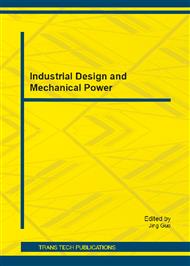p.295
p.303
p.307
p.312
p.316
p.320
p.325
p.329
p.333
A Characteristic Brake System Model for Passenger Car
Abstract:
The brake safety is very important for passenger car development. Quick designing and matching brake system play an important role in automobile OEM. This paper presents a characteristic model for OEM to develop brake system by using of the features of subsystem or components. The model is a proper model because the structure parameters are not necessary. A brake pedal mechanics model is used to describe the relation of the input force and output force. The vacuum booster and master cylinder are modeled as a look-up table model. The hydraulic circuit model takes mainly account of the expansion and loss of hydraulic. After comparing the simulation data and test data, the conclusion that the model is accuracy can be drawn
Info:
Periodical:
Pages:
316-319
Citation:
Online since:
November 2012
Authors:
Keywords:
Price:
Сopyright:
© 2012 Trans Tech Publications Ltd. All Rights Reserved
Share:
Citation:


